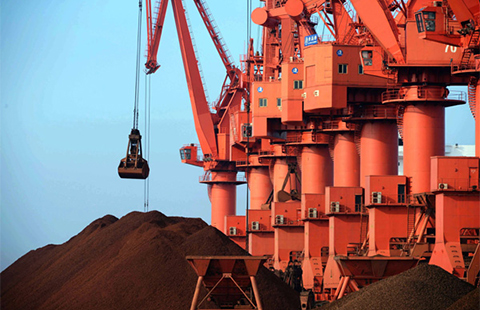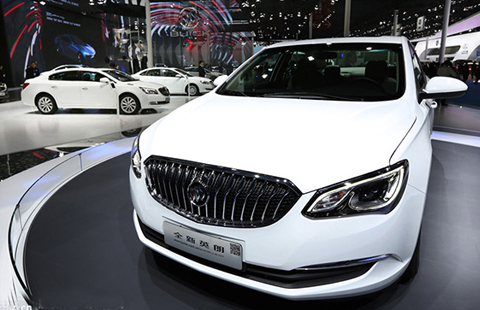Xi sets 6.5% growth target to achieve 'moderate prosperity'
By Chen Jia (China Daily) Updated: 2015-11-04 07:05
 |
|
A female Chinese worker sews clothes at a garment factory in Huaibei city, East China's Anhui province, June 1, 2015. [Photo/IC] |
The country will have to keep its economy growing at no lower than 6.5 percent year-on-year for the next five years, Xi was reported on Tuesday to have told a top-level decision-making meeting last week.
The meeting resulted in the proposal for China's 13th Five-Year Plan (2016-20), which will be submitted for review and approval by the National People's Congress in March.
An annualized GDP growth rate of 6.5 percent will "be the minimum" required, the president said. And only a medium-high level of growth will match the vision in the new five-year plan in which China will double both its aggregate GDP and per capita income by 2020 compared with the 2010 levels.
Chinese economist Justin Yifu Lin, an economics professor at Peking University, said that means that China's per capita GDP would reach $12,000 from the current $7,000.
That would give China a better chance to break the so-called middle-income trap, in which development halts when per capita income hits middle-income level, that many developing countries have encountered, said Zheng Xinli, vice-chairman of the China Center for Economic Exchanges, a government think tank.
Other changes would range from a more inclusive social security network, a general elimination of poverty at the county level, better environmental quality and more efficient public services.
A medium-high level of growth will help Chinese citizens "truly benefit" from a moderately prosperous society, Xi was quoted by Xinhua News Agency as saying.
"In the next five years, China's development should not just be focused on growth speed, but also on growth in volume and, more important, growth in quality," Xi was quoted as saying.
The president's emphasis on growth means that development is still the No 1 priority, economists said.
Wang Tao, chief economist in China at UBS AG, said that "to help achieve such an ambitious growth target in a challenging global and domestic environment, the government also has plans to promote innovation, industrial upgrading, research and development, use of the Internet, modern agriculture and regional business integration."
In the third quarter, China's GDP growth rate slowed to 6.9 percent, down from 7 percent in the second quarter, for the lowest level since 2009 after the global financial crisis.
Economists predicted that this year, the world's second-largest economy may report a growth rate of less than 7 percent, while the economic restructuring reforms will deepen in a move toward an economy more oriented to the service sector.
Qu Hongbin, chief China economist at HSBC bank, said: "The government has sufficient policy ammunition to counter the cyclical slowdown. Meanwhile, we are relatively constructive on China's long-term potential growth rate, given the large 'catch-up' potential in both capital accumulation and productivity."
Xinhua contributed to this story.
- No agreement on Shenzhen-HK Stock Connect: Exchange
- City aims to become 'global mobile phone capital' by 2025
- China eyes investment in stabilizing growth
- China unveils guideline on reforming State-owned asset management
- Chinese property buyers target Tokyo, report
- Growth still top priority in next five years
- JD.com files complaint against Alibaba for 'disrupting market order'
- Regional flights 'indispensable' for nation's healthy development















